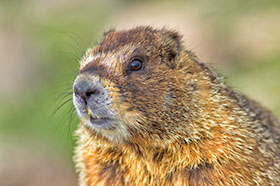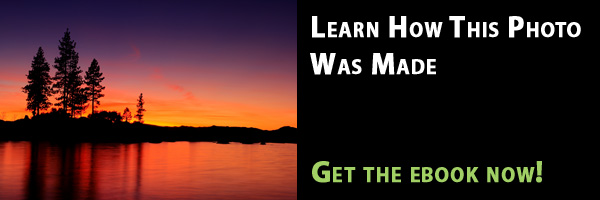
Even though they’re small, they can have big personalities. I can witness conflict, romance, life and death struggles, intimate family moments, and get to know individual animals and their personalities without having to drive hundreds of miles or wander endless backcountry trails.
Photographing microfauna has several advantages for the photographer:
-
The gear tends to be less expensive. No need for a 600mm f/4 lens; most of the critters I photograph can be taken with lenses shorter than 400mm — often less than 200mm. Last year, my main wildlife lens was a 16-50mm, and I rarely went past 30mm on a cropped sensor.
-
Smaller critters occupy a much smaller habitat, which means less wandering and walking, and more time spent with the animals you’re trying to photograph. I often visit the same locations over and over, and in doing so become intimately familiar with animal routes, favorite perches, lighting and times for the best light and animal activity.
-
I’m a witness to a much bigger slice of their lives. I get to witness romance, conflict, drama. I get to be present when the young make an appearance and watch them grow. I’m sometimes present for predators and the Circle of Life. The downside is that sometimes animals that I’ve grown close to don’t make it.

Taking photos of microfauna takes some special work. I get the best results when I follow this pattern:
-
Visit the same locations over and over again. My main motivation is a chance to build a relationship with the animals I’m photographing. I spent most of the last summer with a lovely family of marmots who had almost no fear of me and approached me quite closely, and went about their normal business with me happily pressing the shutter button, capturing moments in their lives. I had marmot pups chewing and yanking on my shoes and one of the adults trying to climb my tripod.
I’ve had pikas perched on my shoe, and drifting off to sleep with me just a few feet away. I’ve had red foxes rooting through my camera bag and using me for shade on bright mornings. For me, one of the main draws of photographing wildlife is that connection with the animal, and small animals allow that connection.
- Get down low; now get a little lower. When shooting the little guys, get low. Did you get low? Great, now get lower. My favorite little critters are such tiny little guys, you have to lay on your belly to get eye-level with them, and to be able to see their world from their perspective. I carry an old blue foam camping pad just for this purpose; I put a hole in it with a loop of paracord so I can clip it to my belt and prevent the wind from stealing it. The pad makes laying out in the sharp talus not so painful.
My current telephoto gear is usually a 200mm f/2.8 or a telezoom (70-400mm). I rarely need more focal length when I follow my favorite tactics. I use a tripod (without a center column, so I can get extra low) and gimbal head for practically every telephoto image I make. Without a tripod, I stand little chance of getting images of tiny little pikas among the talus that don’t look like a fuzzy potato in a pile of rocks.
I sometimes use a flash with an extender, if I can’t get the light I want. I shoot close to wide open using a large aperture (f/2.8-5.6) to limit DOF and make the subject stand out from the background (in this case, similarly sized and colored rocks).
There’s usually plenty of light, so low ISOs are the norm. Because of the plentiful sunlight, I sometimes add a polarizing filter to reduce glare and help prevent blown highlights from snow and light colored rocks – losing a couple of stops still gives me shutter speeds in the 1/1,000-2,000 second-range – usually plenty fast to freeze action.
I find that focusing on the smaller animals not only provides lots of drama and personality, but gives me some unique images and a chance to feel close and connected with my wild subjects. Small animals give me big satisfaction.
Get more great tips in our free weekly newsletter.
About the Author: Jay Ryser — My approach to wildlife photography is maybe a little different from other photographers; I tend to pick a species for a project – and not just a species, but individuals from that species to focus upon (pun always intended). I then spend lots of time in the presence of that individual, allowing them to habituate to my presence and allowing me to become part of that animal’s life, and hopefully capture intimate images that reflect that individual’s life. View more of Jay’s work on his website at: http://www.jayryser.com/

Leave a Reply